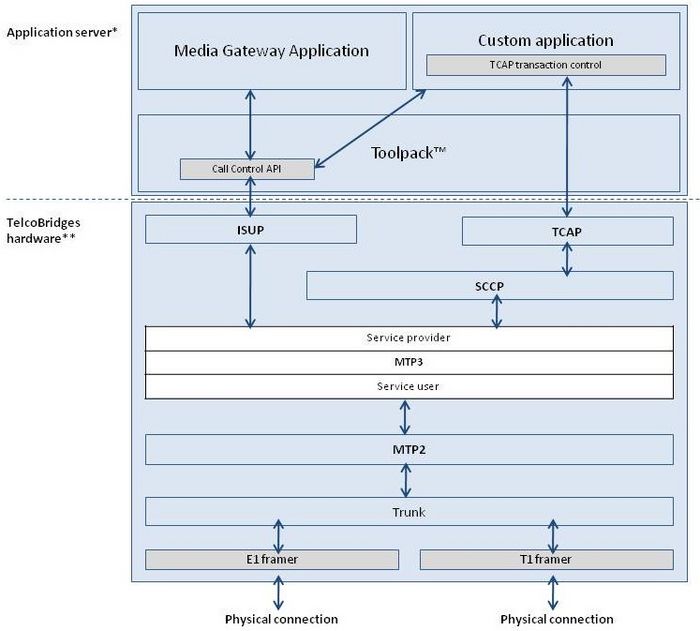MTP3:Architecture
MTP3 defines the functions and procedures of the signaling system for signaling message handling and signaling network management.
- Signaling message handling consists of the actual transfer of a signaling message to the proper signaling link or user part.
- Signaling network management consists of controlling message routing and configuring the signaling network facilities based on predetermined information and the status of the signaling network facilities.
The MTP3 layer is a service provider to the user part such as ISUP, SCCP, and so on. The MTP3 layer is a service user of MTP2 (as shown below).
MTP3 Userpart can be used in conjunction with an above local ISUP or SCCP layer and can be used as a standalone and communicates with remote ISUP or SCCP layer (host application). See the connection mode table in the Userpart Configuration section.
A MTP3 layer has an Userpart section which represent a protocol variant. For a Userpart you must define:
- Linkset(s) (association of Links)
- Routes (for a specific or a range of DPC)
A MTP3 Link must be associated with one MTP2 Link. It is a 1-to-1 association. The MTP3 Link defined a physical signaling link between the TX of this node and the adjacent SP (signaling point).
A MTP3 Linkset is a collection of 1 to 16 links with same or different priority, going to the same DPC into a single entity. If you set multiple links with the same priority then you obtain load sharing between these links. The MTP3 always used the highest priority available link.
NOTE: Load sharing requires at least two signaling links for all bit rates, but more may be needed at lower bit rates. When two signaling links are used, each of them should be able to carry the total signaling traffic in case of failure of the other link. When more than two links are used, sufficient reserve link capacity should exist to satisfy the availability requirements specified in Recommendation Q.706 (from: ITU-T Recommendation Q.705 section 4.4).
A MTP3 Route with Direction as 'Down' indicates the destination point code (DPC) that is an accessible from this configuration node. Each linkset within the route's may have an different priority assigned. If you have multiple linksets with the same priority then you obtain load sharing between these linkset. The MTP3 always used the highest priority available linkset.
The following diagram demonstrates the relationship scenarios between links, linksets and route:
